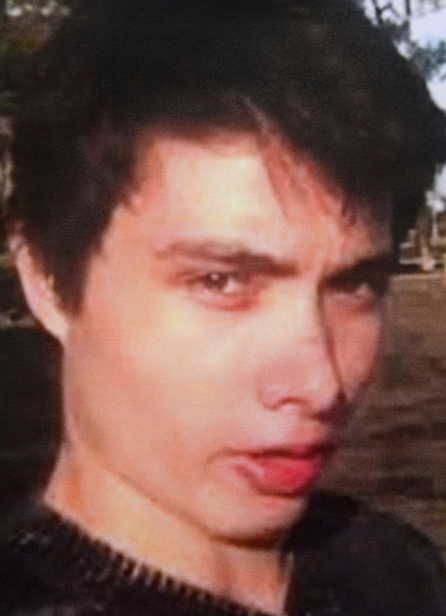The views expressed in our content reflect individual perspectives and do not represent the authoritative views of the Baha'i Faith.
Like most of us, I’ve felt deeply saddened lately over the many mass killings of innocents, and I’ve wondered about the possible causes of such senseless violence and death. I’ve tried, in my thinking about these terrible events, to go beyond the standard debates about gun control and mental health treatment, and see if I can possibly approach the continuing crisis by looking at it in a new way.
Recently, when a young mentally ill man took several weapons to a creative writing class at Umpqua Community College in Oregon, killed nine people and then committed suicide, he left behind a manifesto. When a young mentally ill man killed nine people in a black church in Charleston, South Carolina a few months ago, he left a manifesto, too. Before Ted Kaczynski, the Unabomber, was finally identified and captured after mailing deadly bombs to his ideological “enemies,” he penned a 35,000 word manifesto, railing against technology, modern society and what he called “leftists.”
This pattern now repeats itself with numbing regularity across the world. Some think of it as a particularly American phenomena, but that’s not true—one of the worst mass shootings occurred in Norway, and they’ve happened in many other countries, too. Regardless of geography, they all have a similar pattern: a deranged man (and it’s almost always a man) randomly kills a large number of completely innocent people; then goes to prison, commits suicide or forces the police to do it for him. In almost every case the murderer leaves us a detailed record of his rambling, revealing and sometimes incoherent thoughts. A few mass murderers skip the premeditated manifesto—but most don’t.
So can we learn anything about how to stop these terrible crimes from the documented, painstakingly written manifestos that so many mass killers want us all to read? Or should we completely ignore their rantings, suppress their publication and make no attempt to dignify them by discussing them? Let’s see, first, if we can understand. Many psychologists and psychiatrists would describe the manifesto as one of the primary identifying aspects of an extremely narcissistic, delusional or paranoid personality disorder.
You can see how they might come to that conclusion when you read things like this:
I knew I was always destined for great things. This must be it! I was destined to be the winner of the highest lottery jackpot in existence. I knew right then and there that this jackpot was meant for me. Who else deserved such a victory? I had been through so much rejection, suffering, and injustice in my life, and this was to be my salvation. With my whole body filled with feverish hope, I spent $700 dollars on lottery tickets for this drawing … Without the prospect of becoming wealthy at a young age, I had nothing to live for now. – from the manifesto left behind by the 2014 UC Santa Barbara mass murderer, who killed six people, injured 14 and then killed himself.

Elliot Rodger, the young man responsible for the UC Santa Barbara shootings
These kinds of thoughts, along with many more from disturbing manifestos I won’t subject you to, usually reveal a deep narcissism, that over-blown sense of self and self-importance that makes people think the world revolves around them. “I am the center of the universe,” people with severe narcissistic personality disorders tend to think, “and anyone who opposes me deserves to suffer.” Freud had a term for this kind of twisted reasoning: narcissistic injury.
Those who experience narcissistic injury, and who blame the entire world for their pain and their plight, often magnify their injuries into rage and strike out by trying to take vengeance on the innocent.
That kind of revenge against the world seems to dominate the minds of many if not most mass killers. In a study of the manifestos of five mass murderers, three University of British Columbia psychologists led by Donald Dutton reported in the journal Aggression and Violent Behavior that “Instead of transcending the rejection, they formulate plans to annihilate the transgressors, which they justify as vengeance for the transgressions against them.” In these kinds of violent outbursts, narcissistic injury turns into narcissistic rage.
This intense anger, an incoherent reaction to a deep narcissistic injury, then becomes a major threat to the murderer’s entire sense of self-worth. Professionals attribute narcissistic injury and rage to an over-inflated, hyper-sensitive self-importance, an “I’m so special” inner identity, and an enlarged, grandiose sense of entitlement. Interestingly, many of these same kinds of aberrant personality traits, disorders and mental illnesses often occur in violent criminals and terrorists—and even in some political leaders.
While those severe psychological disorders—so prevalent in the few who use violence against the innocent to achieve their own ends and satisfy their hunger for recognition—thankfully don’t occur in the vast majority of the population, some of the much milder kinds of narcissistic personality traits do challenge otherwise normal people. In other words, everyone has a little bit of narcissism.
We all struggle with finding the right balance between loving ourselves and loving others, between self-love and unselfish love. Our culture tells us to “love yourself,” which can produce egocentrism, conceit and arrogance. Psychiatrists like Erich Fromm advise us to love ourselves in a positive sense, by knowing and respecting our inner self, while being realistic and honest about our weaknesses and our strengths. The Baha’i writings also tell us to know our own selves:
…man should know his own self and recognize that which leadeth unto loftiness or lowliness, glory or abasement, wealth or poverty. – Baha’u’llah, Tablets of Baha’u’llah, p. 34.
In this series of essays on the love of the self, we’ll try to expand our self-knowledge by taking a hard look at the entire spectrum of narcissism—from its worst manifestations in mass murder, to the clinical diagnosis of narcissistic personality disorder, and then to its prevalence as a much less pathological, normally-occurring character trait that everyone has to contend with and face. We’ll explore the broad spectrum of narcissistic behavior from one end to the other, and examine its origins, its primary elements and its spiritual antidotes. Most of all, we’ll see what the Baha’i teachings have to say about ridding our minds and souls of narcissistic tendencies, and how they describe a psychologically and spiritually healthy way of life:
The heart is a divine trust; cleanse it from the stain of self-love, adorn it with the coronal of pure intent… This handful of days on earth will slip away like shadows and be over. Strive then that God may shed His grace upon you, that you may leave a favorable remembrance in the hearts and on the lips of those to come. – Abdu’l-Baha, The Secret of Divine Civilization, p. 115.
















Comments
Sign in or create an account
Continue with Googleor